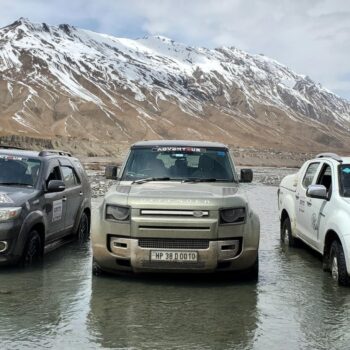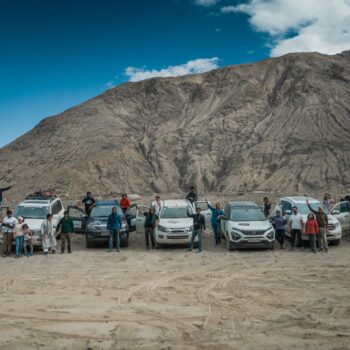Blog
Exploring the Vibrant Festival in Ladakh
Nestled in the pristine beauty of the Himalayas, Ladakh is not only renowned for
Adventour
Nestled in the pristine beauty of the Himalayas, Ladakh is not only renowned for its breathtaking landscapes but also for its rich cultural tapestry. Among the myriad cultural experiences that Ladakh offers, its festivals stand out as vibrant celebrations that showcase the region’s traditions, customs, and spiritual fervor. Let’s embark on an Adventour through the famous festival in Ladakh, immersing ourselves in the colors, music, and rituals that define this unique corner of the world.
Ladakh: A Land of Festivals
Ladakh, often referred to as “Little Tibet,” boasts a diverse cultural heritage shaped by its unique geographical location and historical influences. The region is predominantly Buddhist, with traces of Tibetan, Central Asian, and Indian cultures interwoven into its fabric. Throughout the year, Ladakh comes alive with a plethora of festivals, each offering a glimpse into the vibrant tapestry of its people’s lives.
Experience the Extravaganza: Festivals Celebrated in Ladakh
Hemis Festival
Among Ladakh’s most famous festival in Ladakh, Hemis holds a special place. Celebrated at the Hemis Monastery, this vibrant festival commemorates the birth anniversary of Guru Padmasambhava, the founder of Tibetan Buddhism. The highlight of the festival is the mesmerizing Cham dance, performed by lamas adorned in elaborate costumes and masks, accompanied by traditional music and chants.

When is the Hemis Festival Celebrated?
The Hemis Festival is a two-day event that starts in June according to the Gregorian calendar. It is anticipated that the next Hemis Tsechu will take place on June 16–17, 2024.
Read Also:- Exploring Tourist Hill Places in India – Leh Ladakh
Losar (Tibetan New Year)
Losar marks the beginning of the Tibetan New Year and is celebrated with great enthusiasm in Ladakh. Families gather to offer prayers, exchange gifts, and indulge in traditional delicacies. The festivities include vibrant processions, folk dances, and rituals aimed at warding off evil spirits and ushering in prosperity for the coming year.
When Is Tibetan New Year & When to Celebrate in 2024
The most significant holiday in the Tibetan calendar is the Losar Festival, which is also known as the Tibetan New Year. The yearly celebration of the New Year starts on December 29 and lasts for two weeks, according to the Tibetan Calendar.Travelers have the wonderful opportunity to celebrate the yearly holiday with local Tibetans during Tibetan New Year. On February 10, 2024, Tibetan New Year 2024 will be observed. Additionally, keep in mind that the Tibetan New Year falls on a different day than the Chinese solar calendar.
Read Also:- Let’s Plan A Trip To Ladakh- Ladakh tour packages

Sindhu Darshan Festival
Held annually along the banks of the Indus River in Leh, the Sindhu Darshan Festival celebrates the cultural diversity and unity of India. This festival attracts visitors from across the country who come together to participate in cultural performances, prayers, and rituals while paying homage to the mighty river that sustains life in the region.
When is Sindhu Darshan Festival celebrated?
October was the month chosen for the first celebration of the Sindhu Darshan Festival. However, the festival was moved to June starting in 2000. Therefore, you must be present at the location on June 26 if you wish to take part in this Ladakh celebration. This festival takes place on June 26 in 2024.
Overview/History
Every year on the full moon day of June known as Guru Purnima, there is an event called the Sindhu Darshan Festival in India. It lasts for three days in Leh, in Jammu & Kashmir’s Ladakh District. This event began in October 1997 and has been held annually ever then. Both local and foreign tourists come in big numbers for this celebration.
The Sindhu River, also called the Indus River, is the subject of the celebration of the Sindhu Darshan Festival, as its name implies. The event promotes the Sindhu River as a symbol of India’s harmony and unity among its people throughout this celebration. A symbolic salutation is also extended to our country’s valiant and heroic soldiers who gave their lives in order to save ours.
Ladakh was traversed by the River Sindhu, which Lal Krishna Advani rediscovered in 1955 when visiting Leh. Hindu Sindhis have been coming here to pray ever since. The Sindhu Darshan Abhiyan was founded in 1996 by Advani, a Sindhi by faith, in Choglamsar, a town just eight kilometers from Leh. The purpose of this program is to make Indians aware of the significance and worth of the Sindhu River. This was the first time it was done in October of 1997.
Later in June 2000, the Sindhu Darshan Festival was formally opened with great fanfare and ceremony by Atal Bihari Vajpayee, who was the Prime Minister of India at the time. In addition, he dedicated the new office building of the Ladakh Autonomous Hill Development Council and laid the cornerstone for the Sindhu Cultural Center. This specific facility features a music room, small library, outdoor theater, and exhibition gallery. There is an auditorium in the middle that can hold 500 people. Those who want to purchase wonderful items from Ladakh can visit stalls located within festival grounds.
Celebration
The Sindhu Darshan Festival attracts a sizable number of attendees each year from all around the nation. Those who want to participate in this festival load earthen pots with water from their state’s rivers and submerge them in the Sindhu River. This immersion represents the multifaceted cultural identity of the nation.
On the first day of the event, all attendees are invited to a reception ceremony held on the banks of Sindhu at Shey. In order to promote national integrity, a number of religious organizations’ committees—including the Christian Moravian Church, the Ladakh Buddhist Association, Sunni Anjuman, Shia Majlis, Hindu Trust, and Sikh Gurudwara Prabhandak Committee—form a combined association.
This association then organizes the welcoming ceremony. Approximately fifty senior Lamas perform ritual prayers on the banks of the river. The artists from different states in the nation also present a number of cultural events. An scheduled sightseeing excursion is another benefit that the participants receive. The day concludes with a bonfire. Following the entire celebration, a Puja is scheduled for this event. It’s time for the participants to go on the final day. For the big celebrations, Leh attracts thousands of tourists every year.
Ladakh Festival: Organized by the Ladakh Tourism Department, the Ladakh Festival is a grand celebration of the region’s cultural heritage. Held in September, this week-long extravaganza features traditional music and dance performances, polo matches, archery competitions, and vibrant parades showcasing the rich tapestry of Ladakhi culture.
Read Also:- A Few Things to Remember for a Thrilling Mountain Expedition
Ladakh Harvest Festival
As autumn sets in and the harvest season begins, Ladakhis celebrate with the Harvest Festival, known locally as ‘Saka Dawa.’ This festival is marked by prayers, feasting, and folk performances, where communities come together to rejoice in the bounty of the land and express gratitude for a successful harvest.
The Jammu & Kashmir Tourism department organizes a significant event in Leh called the Ladakh Festival. Every year, from September 1st to September 15th, it is organized to preserve and promote the rich cultural legacy of Ladakh. This spectacular display of ceremonial clothing, dance, singing, and skill involves numerous ethnic troupes and villages. Men can practice archery, women can dance, and the lamas of holy monasteries perform mask dances.

Frequently Asked Questions (FAQ)
Visit Ladakh from June to August for peak festival season or during winter for snowy landscapes and fewer crowds.
Respect local customs: dress modestly, remove shoes before entering religious sites, and ask permission before photographing during sacred ceremonies.
Join festivals openly; stay in local accommodations for cultural immersion, and opt for tour operators offering festival-themed itineraries.
Mind altitude risks, stay hydrated, respect local customs, and avoid activities that might offend the community.
Discover ancient monasteries, stay in traditional homes, interact with artisans, savor Ladakhi cuisine, and trek through breathtaking landscapes.
Conclusion
Ladakh’s famous festival offers a window into the region’s rich cultural heritage, providing visitors with an opportunity to immerse themselves in the vibrant traditions and spiritual fervor of the Himalayas. Whether you’re captivated by the mesmerizing Cham dances of the Hemis Festival or the joyous celebrations of Losar, a journey through Ladakh’s festivals is sure to leave you spellbound, with memories to last a lifetime. So pack your bags, and embark on an Adventour adventure holiday package for Ladakh through Ladakh’s cultural extravaganza, where every festival is a celebration of life, faith, and community.
Read Also:- Best Time to Visit Leh Ladakh: Ideal Seasons for Your Journey
You might also like

Wellness and Adventure Vacations for Women in
Welcome to Adventour, your go-to tour company for exhil...

Exploring Tourist Hill Places in India –
Nestled amidst the majestic Himalayas, Leh Ladakh emerg...